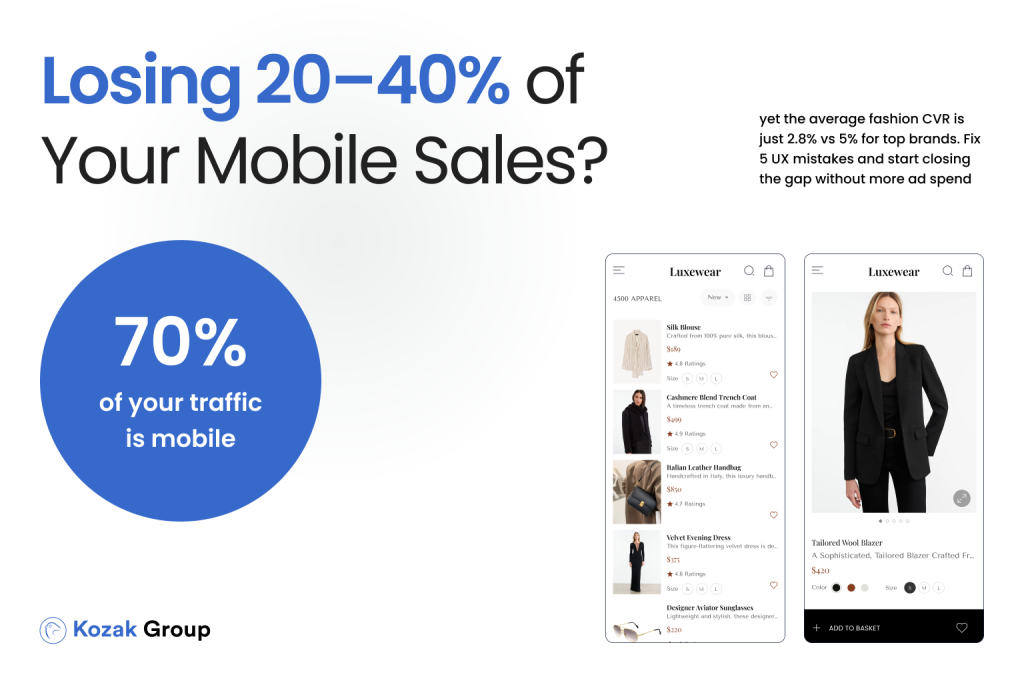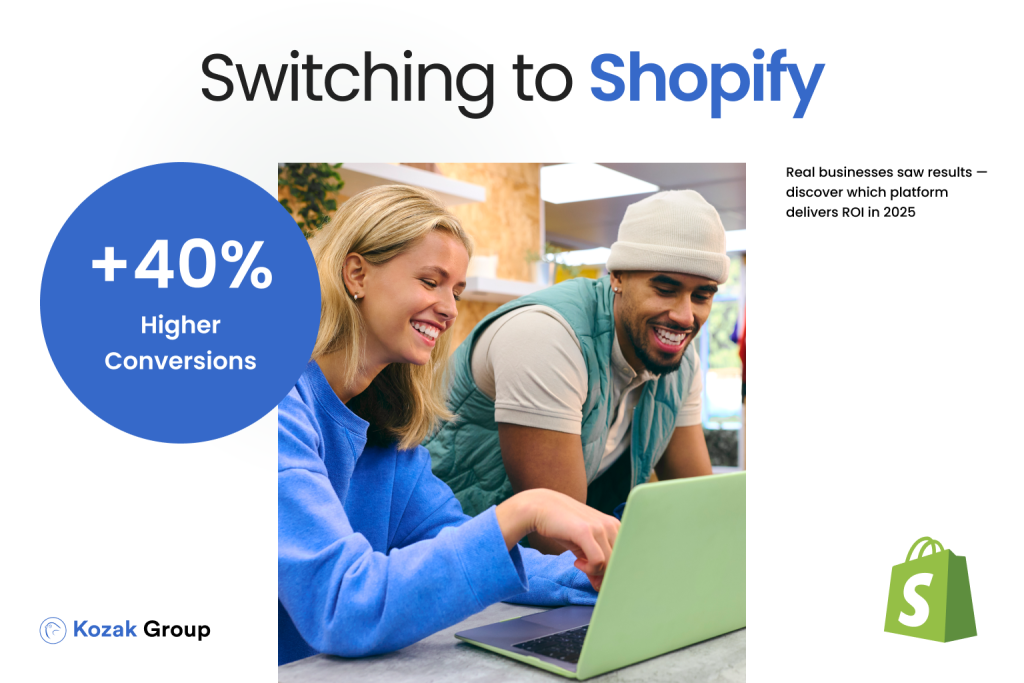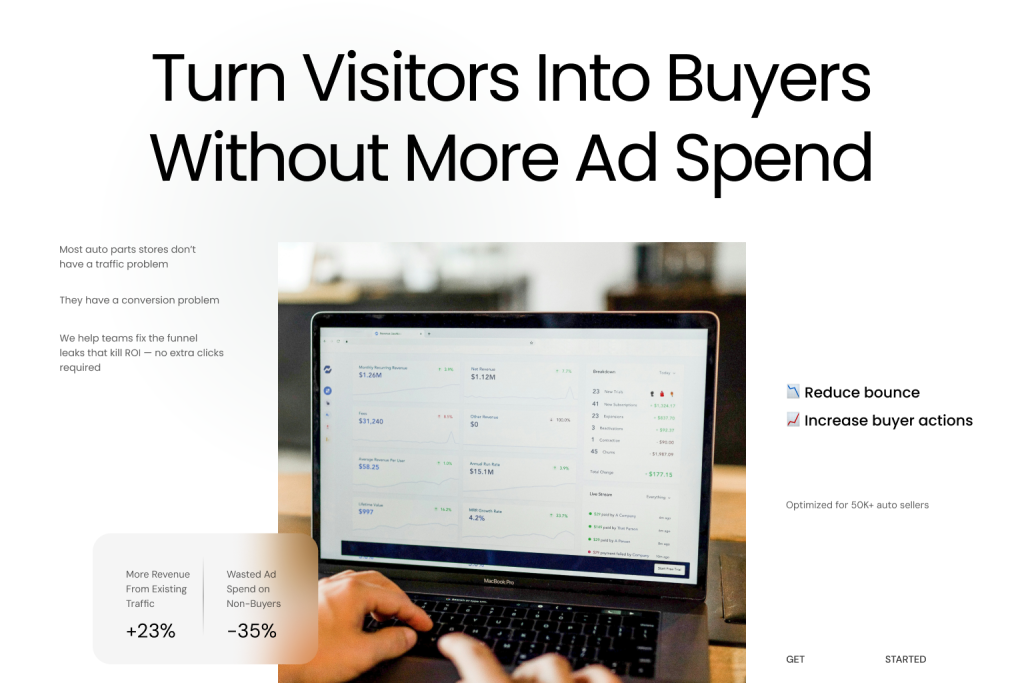In 2025, launching a startup means stepping into a hyper-competitive arena. Markets evolve in real-time, customer expectations are higher than ever, and investor funding is increasingly tied to proof-not promises. For early-stage founders, the question isn’t just “how do we build a great product?” – it’s “how do we build the right product, quickly and with minimal risk?”
That’s exactly where the Minimum Viable Product (MVP) comes in.
An MVP is the leanest version of your product that solves a core user problem. It’s not a prototype. It’s not a full-featured app. It’s a validated learning tool – a way to enter the market, collect real feedback, and avoid wasting time or money on building features your customers don’t want.
And it’s more important than ever.
📊 According to CB Insights, 35% of startups fail because there’s no market need for their product.
MVPs help you avoid this fate by validating your idea with real users before investing in full-scale development.
As someone who’s helped dozens of startups bring their first version to life at Kozak Group, I’ve seen firsthand the impact a smart MVP can have. It can mean the difference between wasting six months on guesswork or gaining six months of traction and user insight.
In this guide, I’ll walk you through how to build an MVP for your startup in 2025 – step-by-step, with real-world insights, common pitfalls, and strategic recommendations from the field. Whether you’re bootstrapping or pitching to VCs, this guide is your starting point for building a lean, user-driven product the right way.
MVP for Startup: Why Starting with an MVP Is Crucial in 2025
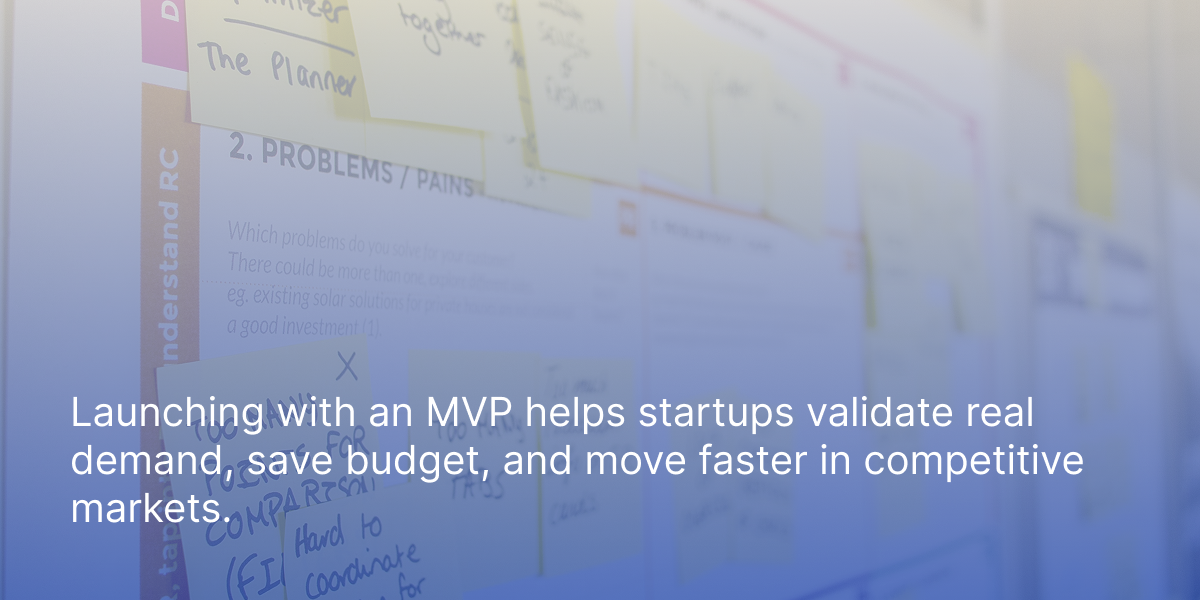
This is why the Minimum Viable Product (MVP) model isn’t just recommended; it’s essential. Aligning MVPs with overarching business objectives ensures that every feature and functionality serves strategic goals, such as revenue targets or market expansion. Agile development facilitates this approach by enabling continuous iterations through user feedback, helping teams stay adaptable and prioritize features effectively to meet user needs.
Introduction to Minimum Viable Product
The Minimum Viable Product (MVP) is a cornerstone of the Lean Startup methodology, which emphasizes rapid experimentation and customer feedback in the product development process. An MVP is a version of a new product that allows a team to collect the maximum amount of validated learning about customers with the least effort. This approach enables startups and businesses to test their ideas, gather feedback, and iterate towards a successful product-market fit.
By focusing on the core features and functionality, an MVP helps teams avoid unnecessary work and reduce the risk of launching a product that may not meet customer needs. The goal is to create a product that solves a primary problem for a defined group of early users, allowing the team to collect actionable insights and make informed decisions about future development. In essence, an MVP is not about being minimal for the sake of it; it’s about being strategic and intentional in your product development efforts.
Speed Wins in 2025
Time-to-market is one of the biggest differentiators for startups today. Building an MVP allows founders to launch in 4–12 weeks instead of 6+ months, enabling early testing and feedback cycles that give you an edge. The iterative process of agile development helps in launching MVPs quickly by allowing teams to gather feedback and enhance understanding of user needs.
“In 2025, launching fast doesn’t mean launching sloppy-it means launching smart, with a feedback loop built into the foundation.” – Vladyslav Koretskyi, COO at Kozak Group
Reduce Risk, Burn Less Budget
Building a full-featured product without validation drains capital. According to CB Insights, 38% of startups fail due to running out of cash, often because they overbuilt without confirming user demand. Managing limited resources effectively is crucial to avoid this pitfall.
An MVP helps you:
- Spend only on what’s necessary to test the idea
- Validate real user needs before full investment
- Adjust the product based on insights – not assumptions
- Efficiently implement the various user stories to manage resources effectively
Investors Want Traction, Not Just Vision
In 2025, early-stage investors expect more than a deck – they expect proof. A working MVP with user activity, retention, or even early revenue carries far more weight than a concept alone. Validating business hypotheses through an MVP is crucial for testing assumptions and ensuring market demand.
An MVP signals to investors that:
- You’ve minimized guesswork
- You can execute under constraints
- You’re serious about validation and adaptability
Early customers play a critical role in providing feedback for product development, helping to refine and improve the MVP before significant investments are made.
Better Learning = Smarter Product Decisions
MVPs give you real user feedback quickly. This data tells you:
- Which features are essential vs. irrelevant
- What messaging resonates with users
- Where the product experience is smooth or broken
The development team plays a crucial role in gathering this feedback and adapting to user needs.
The iterative process allows for continual refinement and validation of product features based on real user interactions.
The result? When it’s time to scale, you’re building with clarity – not just hope.
In short, starting with an MVP in 2025 means you’re de-risking your startup while gaining faster access to users, feedback, and traction. It’s not about being minimal – it’s about being intentional.
Next, we’ll break down exactly what an MVP is (and what it’s not).
Understanding the Lean Startup
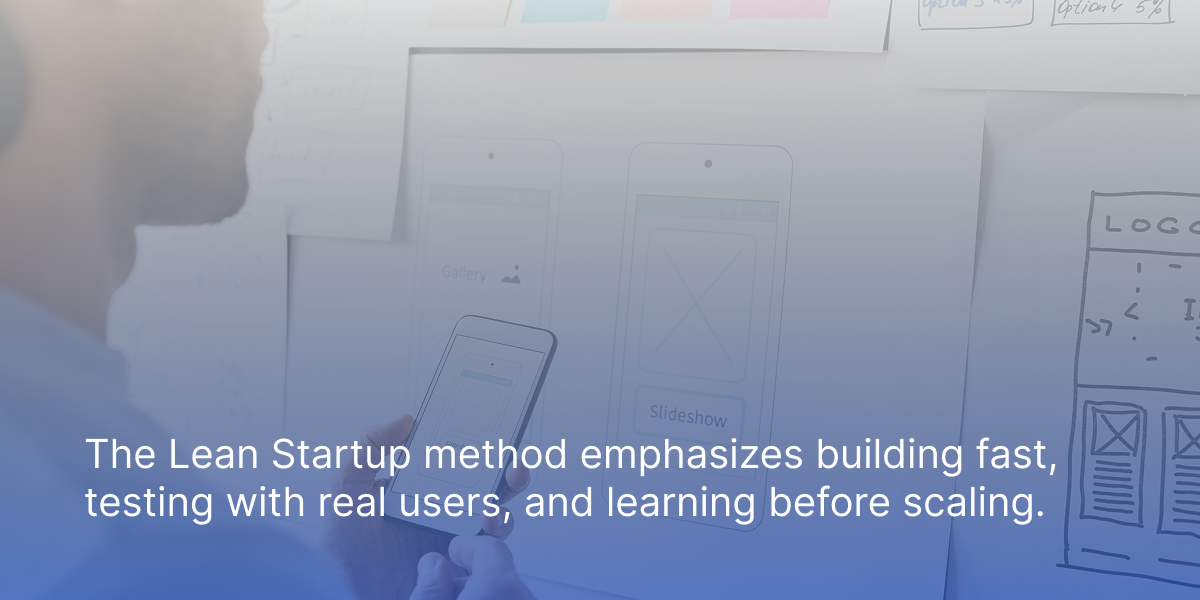
This methodology is particularly useful for startups as it allows them to quickly test their ideas, gather feedback, and pivot towards a successful product-market fit. By focusing on creating Minimum Viable Products (MVPs), teams can validate their assumptions, reduce waste, and ensure that they are building products that meet real customer needs. The Lean Startup approach is not just about speed; it’s about creating a feedback-driven development process that leads to sustainable business success.
What an MVP Is (And What It’s Not)
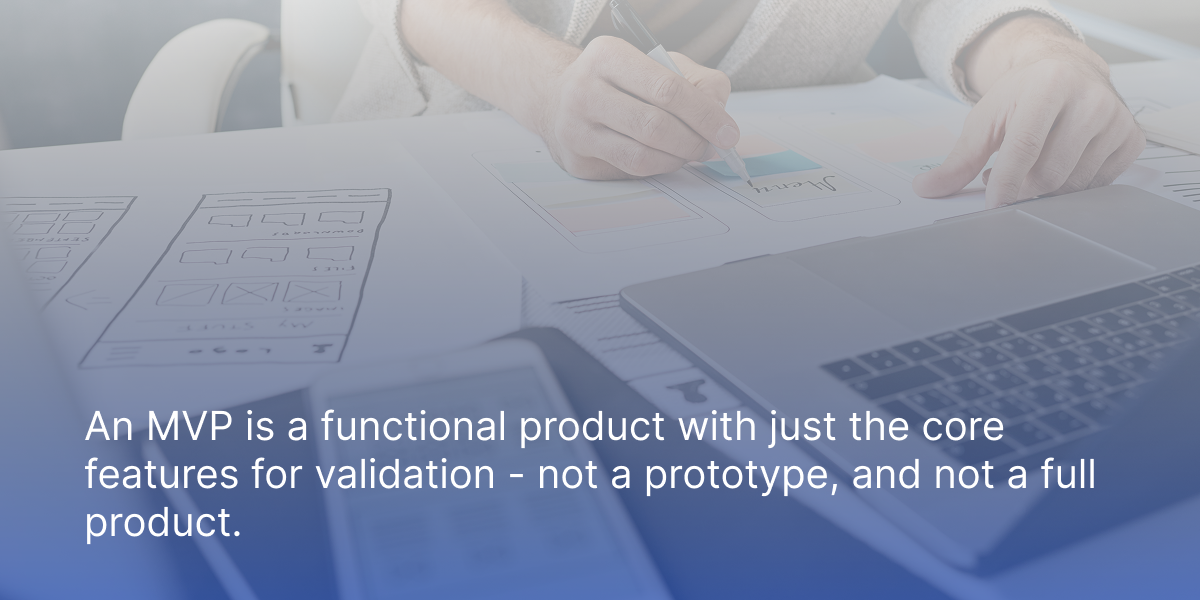
The business model canvas can guide the development of an MVP by validating assumptions and enhancing the overall business model through iterative testing.
✅ What an MVP Is
A Minimum Viable Product is a lean version of your product that includes only the core features necessary to solve the primary problem for a defined group of early users. The goal is simple: launch fast, learn fast.
An MVP allows you to:
- Validate your value proposition with real users
- Test your assumptions before scaling
- Collect actionable feedback to guide future development
- Show traction to investors and stakeholders
A well-built MVP is fully functional – just focused. It’s not a prototype or wireframe. It’s something real users can engage with, even if it’s not “feature complete.”
❌ What an MVP Is Not
Let’s clear up a few common misconceptions:
- Not a broken or buggy product
An MVP still represents your brand. It should work smoothly and offer real value. - Not a feature dump
Including too many features defeats the purpose of being “minimum.” It slows down development and dilutes your core offer. - Not the final product
MVPs aren’t meant to be perfect or polished. They’re the foundation for what comes next – not the endgame. - Not a PoC or Prototype
A Proof of Concept (PoC) tests if something can be done. A prototype visualizes how it might look. An MVP? It does what’s needed – live, and with real users.
🧠 Pro Tip:
“Your MVP should solve one problem, for one group of people, in one simple way.”
— Vladyslav Koretskyi, Kozak Group
Understanding the true nature of an MVP is the first step to building one successfully. Now, let’s get tactical. In the next section, I’ll walk you through how to build an MVP step by step in 2025 – the smart way.
Step-by-Step Guide to Building an MVP in 2025
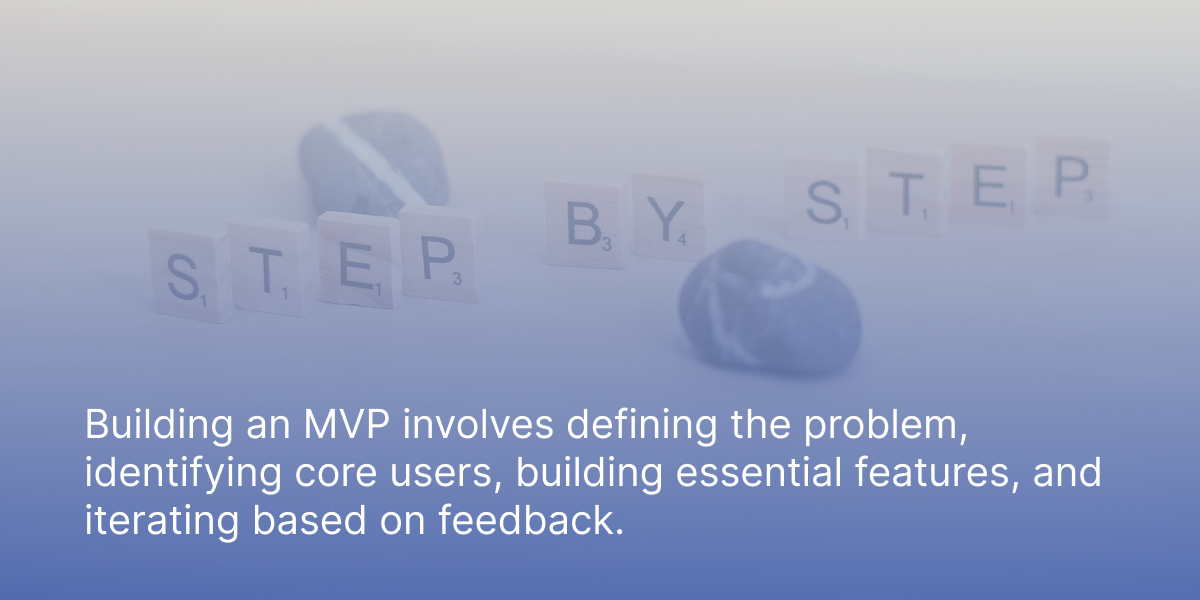
Step 1: Define the Problem
Before you start building, you need to clearly define the problem you’re solving. Identifying specific solutions to address user problems is essential for creating a product that resonates with your target audience. This involves understanding your users’ pain points and how your MVP can provide value.
Step 2: Market Research
Conduct thorough market research to validate your idea. This step helps you understand the competitive landscape and identify opportunities for differentiation.
Step 3: Define the Core Features
Focus on the core features that will solve the primary problem. Avoid feature creep by sticking to the essentials that provide the most value to your users.
Step 4: Create a Prototype
Develop a simple prototype to visualize your MVP. This helps in gathering early feedback and making necessary adjustments before full-scale development.
Step 5: Build the MVP
With the prototype validated, start building your MVP. Keep the development process agile and iterative, allowing for continuous improvement based on user feedback.
Step 6: Launch and Gather Feedback
Implementing features in a piecemeal approach allows you to introduce minimal viable products gradually. This enables you to gather user feedback effectively and make incremental improvements. Launch your MVP to a small group of users and collect their feedback to refine your product.
Step 7: Iterate and Improve
Use the feedback to make necessary adjustments and improvements. The goal is to continuously enhance your MVP until it meets the needs of your users and aligns with your business objectives.
🔹 Step 1: Define the Problem You’re Solving
Every great MVP starts with one clear question:
“What is the #1 problem we’re solving for users?”
Don’t build until you’ve defined:
- A specific user pain point
- A clear use case that solves it
- Why this problem is urgent to solve now
📌 Tool: Use founder interviews, surveys, Reddit, and niche forums to identify real user frustrations.
🔹 Step 2: Identify Your Core Users and Audience
You’re not building for “everyone.” MVPs succeed when they’re targeted.
- Define your early adopters: Who will be the first people to care?
- Build a 1–2 user persona model
- Focus your messaging and UX around their language and pain
📊 Data point: MVPs focused on a niche audience have 2x higher engagement rates in the first 30 days.
🔹 Step 3: List Out the Core MVP Features
Now it’s time to turn the problem into a simple product.
Use the MoSCoW method:
- Must-Have → Core functionality (ex: user signup, file upload)
- Should-Have → Features that add value but aren’t essential (ex: notifications)
- Could-Have → Nice-to-haves (ex: dark mode)
- Won’t-Have (yet) → Features to postpone for v2+
📌 Keep your MVP limited to “Must-Have” only—this is your testable product.
🔹 Step 4: Design the User Experience (UX/UI)
Even a lean MVP should have a clean, intuitive user experience.
Focus on:
- Fast onboarding
- Simple navigation
- Clear CTAs (calls to action)
At Kozak Group, we build clickable prototypes early so clients can test UX before writing any code.
“A simple experience wins. If users can’t understand the product in 10 seconds, your MVP isn’t ready.”
— Vladyslav Koretskyi
🔹 Step 5: Choose a Scalable Tech Stack
Tech should enable speed and future scaling.
Depending on your needs:
- No-code/low-code → For ultra-lean MVPs (e.g. Bubble, Glide)
- Custom dev → For MVPs with logic-heavy features or scaling requirements
Discuss tech stack with your development partner based on future roadmap and performance needs.
🔹 Step 6: Develop in Sprints with Continuous Testing
Use agile sprints (1–2 weeks) with weekly deliverables.
Include:
- Regular feedback loops with testers or stakeholders
- Basic QA testing for functionality, security, and UX
📌 Reminder: A bug in a small MVP feels bigger to early users. Keep it tight.
🔹 Step 7: Soft Launch to Early Adopters
Start with 20–50 real users.
Track:
- How users interact
- Where they drop off
- What features they ignore vs. love
Use this early traffic to learn, not to scale.
🔹 Step 8: Measure, Learn, Iterate
This is where the magic happens. Don’t rush to add features – study what works.
Key MVP metrics:
- Activation rate (who gets value quickly)
- Retention (who comes back)
- Feature usage (what users are actually doing)
- Qualitative feedback (what users say)
📈 Pro Tip: Set up Mixpanel, Hotjar, or FullStory early to collect behavior data.
With this 8-step process, you’re not just building faster – you’re building smarter. And most importantly, you’re learning what your market wants before you spend everything building what they don’t.
Next up: Let’s talk about what NOT to do when building an MVP.
Mistakes to Avoid When Building an MVP
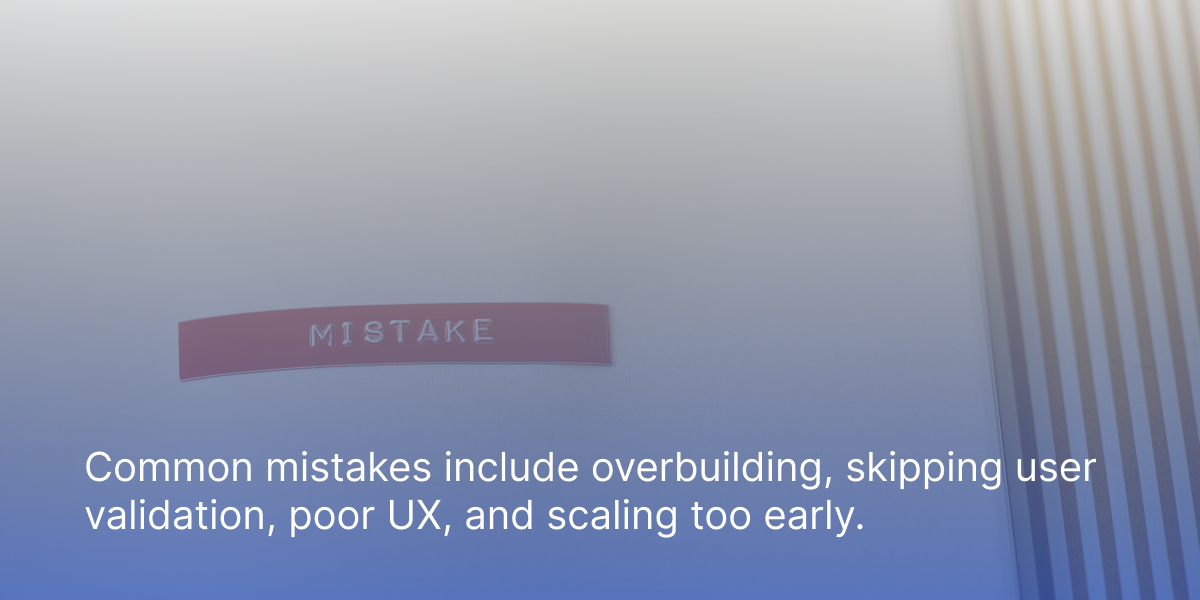
Here are the most common (and costly) mistakes founders make during MVP development, and how to avoid them:
One common mistake is not understanding the difference between the MVP approach and traditional stealth mode. While ‘stealth mode’ involves comprehensive planning and execution before market testing, the MVP approach emphasizes rapid iteration and customer feedback to validate business hypotheses quickly and minimizes risks associated with large investments.
❌ 1. Overbuilding from the Start
This is by far the most common mistake. Startups often feel pressure to make their MVP look like a full product, adding “just one more feature” until the build drags on for months.
The whole point of an MVP is to validate the core idea with the smallest possible investment. Every unnecessary feature added before launch means:
- More development time
- More testing and QA
- More things that can break
- More room for confusion in UX
💡 Tip: Before adding a feature, ask yourself: “Does this help validate the core hypothesis?” If not, move it to your backlog.
❌ 2. Skipping User Validation
Too many founders build based on assumptions – not actual user feedback.
Your MVP should be shaped by:
- Customer interviews
- Early user behavior (tracked with tools like Hotjar or Mixpanel)
- Real-world feedback after launch
Relying only on your team’s internal opinions results in a product that might be beautiful but irrelevant.
💡 Tip: Test wireframes and clickable prototypes with 5–10 target users before coding anything.
❌ 3. Choosing the Wrong Tech Stack
Many teams jump into development without considering scalability, cost, or speed. Others go for the “coolest” technologies, even if they slow them down.
Your MVP tech stack should be:
- Lightweight and quick to build with
- Flexible enough to scale later
- Maintainable by your future team (or your agency partner)
💡 Tip: MVPs don’t need bleeding-edge tech. They need fast, stable, and cost-effective foundations.
❌ 4. Trying to Please Everyone
A mistake many first-time founders make: building an MVP that tries to appeal to too broad an audience. When you try to solve too many problems for too many people, you end up solving nothing well.
Your MVP should focus on:
- A single problem
- For a specific audience
- With one clear value proposition
💡 Tip: Define your early adopters. Build only for them. Scaling comes after product-market fit.
❌ 5. Ignoring UX in the Name of “It’s Just an MVP”
Some founders think MVPs don’t need good design or experience. But your first users are judging whether to give your product a chance.
A confusing, broken, or ugly interface can kill your MVP – even if the core idea is solid.
💡 Tip: Use clean, minimal UI. Prioritize simplicity and usability over flashiness.
❌ 6. Not Setting Clear Success Metrics
If you don’t define what success looks like, how will you know if your MVP is working?
Many teams launch, gather a bunch of data, and then don’t know what to do with it.
Instead, define 2–3 key success indicators based on your hypothesis. Examples:
- 40% of users complete onboarding in <5 mins
- 30% click on the core CTA
- 20% return within 7 days
💡 Tip: Set your metrics before launch. Make decisions based on data, not instinct.
❌ 7. Abandoning the MVP Too Early
You launched, got some feedback, didn’t get the reaction you hoped for… and now you’re scrapping it?
Don’t.
An MVP is the beginning of your learning process. Most first launches won’t hit it out of the park. That’s normal.
The magic happens when you:
- Analyze the results
- Talk to users
- Iterate quickly
💡 Tip: A “failed” MVP is only a failure if you don’t learn from it.
Avoiding these mistakes doesn’t guarantee success, but it dramatically improves your odds. At Kozak Group, we help startups stay focused, disciplined, and user-driven from day one.
Common Misconceptions
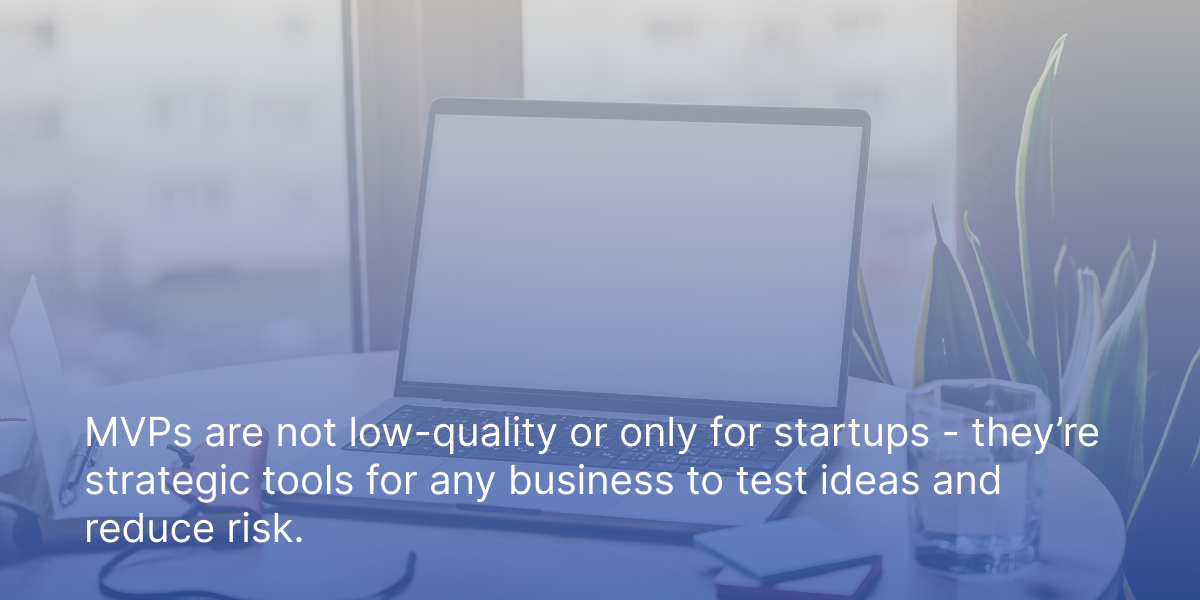
Another misconception is that MVPs are only for startups. However, established businesses can also benefit from using the MVP approach to test new ideas, gather feedback, and drive innovation. By understanding these misconceptions, teams can create successful MVPs that drive business success and meet customer needs. The MVP approach is a strategic tool that helps both startups and established companies validate their ideas and ensure they are building products that resonate with their target audience.
MVP Success Stories: How Startups Launched Lean and Won

Here are a few inspiring examples of how MVP software development worked in the real world:
🛏️ Airbnb: A Landing Page That Launched a Billion-Dollar Brand
The MVP:
Before building any platform, Airbnb’s founders created a simple website offering lodging in their own apartment during a busy conference in San Francisco. No complex booking system — just photos and a form.
The Outcome:
They validated demand and gained real bookings before writing a line of code for the full platform. That MVP insight shaped what would become one of the most successful startups in history.
Lesson: You don’t need to build everything to learn something valuable. A simple landing page + real users = powerful validation.
📂 Dropbox: A Demo Video That Raised Millions
The MVP:
Instead of building a complex file-syncing platform, Dropbox’s founder released a 90-second video demo showing how the product would work.
The Outcome:
The video exploded among early adopters. Dropbox gained over 75,000 signups overnight, giving them strong product validation and investor leverage.
Lesson: Sometimes an MVP isn’t a product – it’s a prototype paired with a clear, compelling story.
📝 Buffer: Tweet First, Build Later
The MVP:
Buffer launched with a single landing page explaining the product concept (scheduled tweets), with a signup button. Clicking “Get Started” led to a form asking for feedback – because the product didn’t exist yet.
The Outcome:
The responses helped the founders understand user expectations and prioritize which features to build first.
Lesson: Your earliest users will tell you what to build – if you ask before assuming.
These stories share a common thread: each startup started with the smallest, most testable version of their product idea. They didn’t aim to launch big – they aimed to learn fast.
And that’s exactly what a well-designed MVP enables.
When to Move Beyond the MVP

Knowing when to move beyond the MVP is just as important as knowing when not to rush into building. Too many startups either scale too early (with unvalidated assumptions) or stay stuck tweaking an MVP that’s already doing its job. Transitioning from an MVP to a minimum marketable product (MMP) is essential to satisfy market demand and ensure customer acceptance without over-engineering.
Here’s how to recognize when you’re ready to go from MVP → full product:
✅ 1. You’ve Achieved Product-Market Fit Signals
You’re starting to see repeat usage, organic referrals, and customers saying, “This solves my problem.” That’s a sign your core value proposition has landed.
Look for:
- Retention rate > 30% after 30 days
- Customer testimonials or referrals without incentives
- Users solving a pain point using your product without hand-holding
💡 Pro Tip: If users are using workarounds or requesting advanced features, you’re ready to evolve.
✅ 2. Your Key Metrics Are Consistent (or Growing)
You set clear KPIs during your MVP stage (right?). If those metrics are now stable – or improving – you have the data you need to justify scaling.
Look for:
- Rising activation rate
- Lowering churn
- Increasing feature engagement
- Traffic-to-signup or signup-to-conversion improvements
This is how investors and product teams know your model is working.
✅ 3. Users Are Asking for More Functionality
When your early adopters begin requesting features that go beyond your MVP scope – analytics dashboards, integrations, automations – it’s a strong signal they’re invested in your product and ready to grow with it.
But don’t build blindly. Keep learning from:
- User interviews
- Support tickets
- Product usage heatmaps
✅ 4. You’ve Tested Multiple Iterations
The first MVP version is rarely the one you scale. After 2–3 iterations, based on real user feedback, you start to form a clear roadmap for the next stage.
“The goal isn’t to build once. It’s to build, measure, learn, and evolve.”
— Vladyslav Koretskyi
If you’re no longer learning new things from MVP feedback loops, you’re ready to move.
✅ 5. You’re Seeing Commercial Validation
This is the big one.
If your MVP is generating:
- Recurring revenue
- Investor interest
- B2B pilot requests
- or enterprise clients asking for custom builds…
Then your MVP has done its job: it proved there’s a market. Now it’s time to deliver at scale.
⏸️ When Not to Move On Yet:
- Your retention rate is low or flat
- You’re still guessing what features users need
- You haven’t spoken directly to users post-launch
- You’re relying on assumptions, not data
Scaling too soon can sink your startup. Scaling too late can mean a missed opportunity. The sweet spot? When you’ve proven demand, validated usability, and built a clear roadmap based on feedback.
MVP in 2025 Is Not Optional – It’s Strategic
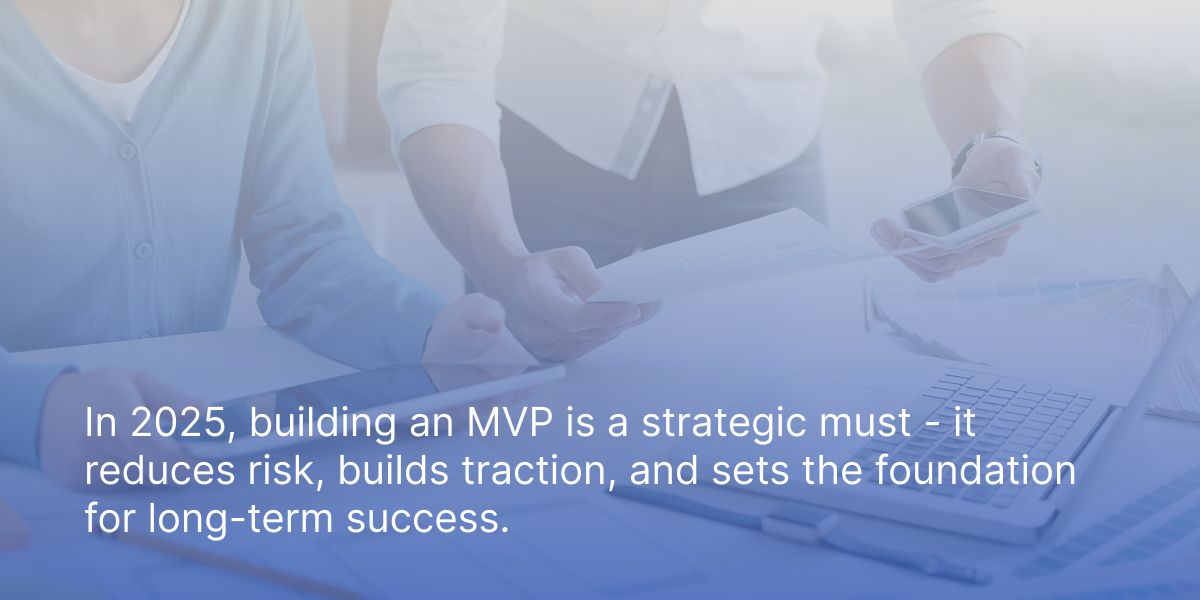
By starting small, staying focused, and learning quickly, you gain:
- A stronger product roadmap based on real feedback
- Data to impress investors and unlock funding
- A user base that grows with you, not leaves you
At Kozak Group, we’ve helped dozens of startups go from idea to MVP – and from MVP to funded, scalable businesses. We don’t just build software. We build smart first versions that move your vision forward, fast.
The concept of a startup MVP has evolved; it’s now about creating a product that improves on existing solutions and incorporates user feedback throughout the development process. If you’re ready to stop guessing and start building with clarity, strategy, and speed – let’s talk.



